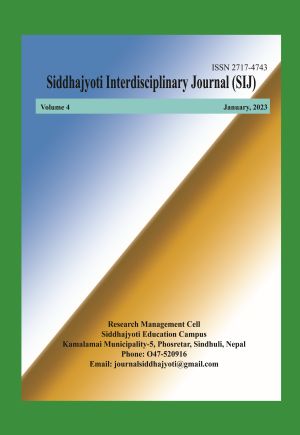Analysis of the Relationship between Tax Revenue and Economic Growth in Nepal
DOI:
https://doi.org/10.3126/sij.v4i1.54131Keywords:
Economic growth, ECT, relationship, tax revenue, VECMAbstract
This study aimed at assessing the relationship between tax revenue and economic growth in Nepal. A Causal comparative research design was employed using the time series data from the fiscal year 1974/75 to 2019/20. Accordingly, GDP at the constant price was considered the dependent variable, and income tax, excise duty, value-added tax, and customs duty as independent variables. Since all the variables at their log forms were stationary at their first difference, in order to measure the nature and strength of the relation of the dependent and independent variables, a vector error correction model (VECM) was employed. Besides, Johansen’s cointegration results revealed the existence of the relationship between the variables in long run. In addition, the results of the analysis also found that, in the long run, income tax has significant and negative relationship, value added tax has a significant and positive relationship but the customs duty and the excise duty have insignificant and negative relationship with the GDP. Regarding the short-run, the value of the error correction term (ECT) indicates that, though the move is towards the equilibrium, is weak and all the independent variables have positive relation with the dependent variable.
Downloads
Downloads
Published
How to Cite
Issue
Section
License
This license enables reusers to distribute, remix, adapt, and build upon the material in any medium or format for noncommercial purposes only, and only so long as attribution is given to the creator.

